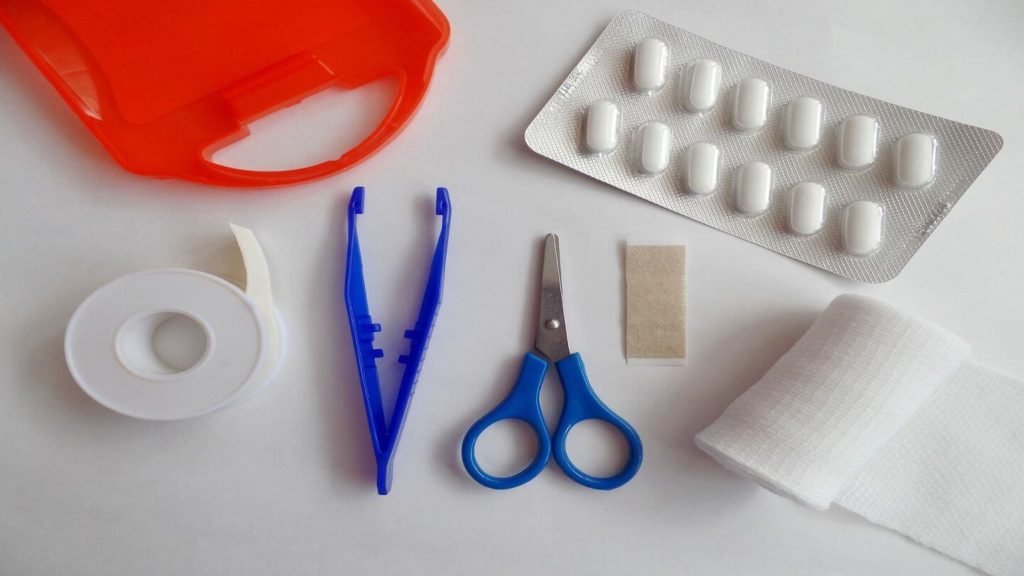Recently updated on April 29th, 2020 at 05:53 pm
From cuts and scrapes to sunburn and stings, all sorts of mishaps can happen when you travel. If you plan to travel outside of major cities, it’s a great idea to pack a travel first aid kit. While you don’t need to bring a small pharmacy, there are a few basic items that will come in handy for minor incidents.
If you’re not sure how to pack a first aid kit for your next trip, use this checklist as a guide for things you may need. For most travellers, this basic kit will cover the majority of small incidents. The odds are you’ll probably never use it, but it’s great to have peace of mind that you’re prepared.
For any injury or illness that can’t be resolved with items above, you should always seek professional medical help. You’ll also need to have comprehensive travel insurance to cover any medical emergencies or minor mishaps that happen during your trip.
Remember, this article is a guide only and should not be used in place of advice from qualified healthcare professionals. Always check in with your doctor or pharmacist before you head off on your adventure.
1. Bandaids (plasters or bandages)


Bandaids are an essential item for any travel first aid kit. It’s best to carry a number of bandaids in a range of sizes and thickness. Don’t forget to keep a few bandaids in your day bag when you go out walking. There’s nothing worse than being slowed down by a pesky blister on your toes!
2. Antiseptic wipes and creams
If you get a cut or graze, you’ll always need to clean it before you apply a dressing to avoid infection. Antiseptic wipes are great for sterilising a wound, while antibacterial ointments should be dabbed on larger wounds to prevent infections. It will also help your wound heal faster, so you’ll be back in action before you know it.
RELATED CONTENT: 12 important travel safety tips everyone should know
3. Tweezers


Tweezers are a nifty little tool that always comes in handy for pulling out splinters and taking out small bits of dirt or stones when you’re cleaning a wound.
4. Pain relief medication
Don’t let a headache or minor pain ruin the party on your trip! Bring a small pack of your favourite painkillers like paracetamol, ibuprofen, or whatever you normally take for pain relief.
5. Oral rehydration salts
There’s always a chance you’ll get dehydrated when travelling, whether you catch a stomach bug or have a long day at the beach. If you experience any vomiting, diarrhoea or intense sweating, your body will lose electrolytes that are difficult to regain through drinking water alone. Drink a rehydration solution (you can get them in powder, tablet or liquid form) and you’ll feel better much faster.
6. Sun protection
Heading to the sunny shores of Italy or the tropical Thai islands? Protect your skin by bringing a bottle of SPF-30 or higher sunscreen. You should also bring a sunburn relief gel or lotion, just in case you catch a few too many rays. We love using aloe vera gel to soothe sore red skin.
6. Insect repellent
You’ll need a good bug spray almost anywhere you go, from the jungles of South America or the plains of Africa to the beaches of Asia. Insect repellents that contain DEET are the most effective way to prevent bites from mosquitoes, ticks and other bugs that can spread diseases like malaria. Pack a bottle and make sure you apply it regularly!
RELATED CONTENT: These are the safest travel destinations to visit in 2020
7. Anti-itch cream
If you do happen to get bitten by an insect, you don’t want to be driven mad by the scratching! Bring some anti-itch cream that contains hydrocortisone to help relieve itchy skin. It’s also useful to bring some antihistamines, to help control any particularly irritating itching and swelling.
9. Motion sickness medication


If you’re prone to motion sickness on buses, trains, boats or planes, you should definitely carry some motion sickness tablets. The most famous brand is Dramamine but you can talk to your pharmacist about the best kind for you. Don’t let an upset stomach ruin your adventure!
10. Water purification tablets
Depending on the country you are visiting, it is sometimes best to avoid drinking the local water when travelling, because it may contain foreign microbes that your body isn’t used to. If you won’t have regular access to safe drinking water, you can bring some water purification tablets. Just dissolve them in your water and you can guzzle away!
RELATED CONTENT: Is it safe to drink the tap water in Europe?
Important note
This information is general travel health advice only and should not be used in place of a consultation with a qualified healthcare professional who can give you tailored advice for your medical needs. If you’re carrying any generic medication when travelling, you should always keep it in its original packaging in case customs officials need to check it. If you have never used any of the above items, check with your doctor or pharmacist before you do, in case of any allergies or conditions that this general advice cannot cover.
Do you know how to pack a first aid kit for travelling? Comment below with the essential first aid items you can’t go without when you travel!